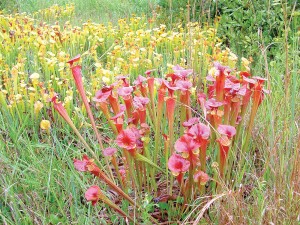Drive south about 177 miles to McClellanville and you will find yourself at the intersection of two imaginary streets: “Much To See” and “Much To Do.” McClellanville, often described as a quaint fishing village, is in fact picturesque and strategically located. It sits in an area where there is much to do and see and eat.
Many recognize McClellanville as the port of call for Hurricane Hugo back on Sept. 21, 1989, but despite suffering heavy damage it survived. To this day it remains a charming village laden with live oaks, salt marsh and salty air from the nearby Atlantic. Rich, too, with fragrant salt marsh smells, McClellanville is a fishing village. Known for its close ties to the sea, McClellanville sits between the Cape Romain Wildlife Refuge and the Francis Marion National Forest, two vastly different but equally rich ecosystems.
The village of McClellanville sprang up in the late 1860s when area plantation owners A.J. McClellan and R.T. Morrison sold lots near Jeremy Creek to Santee Delta planters seeking relief from summer fevers. Today McClellanville remains best known for its shrimping fleet and seafood industries. It’s a favored place to many and sits near Hampton Plantation, one-time home to Archibald Rutledge, South Carolina’s first poet laureate.
Approximately halfway between Mt. Pleasant and Georgetown, McClellanville is close to one of South Carolina’s more beautifully named towns, Awendaw, home of the Blue Crab Festival. The nearby Sewee Visitor and Environmental Center, operated by the U.S. Fish & Wildlife Service, provides a home to endangered red wolves. Across Highway 17 sprawls the 259,000-acre Francis Marion National Forest, a luxuriant landscape fully recovered from Hugo. A home to diverse wildlife species it also hosts mysterious Carolina bays and their carnivorous pitcher plants.
If all the things to do and see whip up a good appetite, stop at the Sewee Restaurant and try its she crab soup. When you eat a bowl of this Lowcountry delicacy you’re dining on history. Scottish settlers brought a crab-and-rice soup to the Charleston area in the early 1700s, according to culinary historian John Martin Taylor. Legend holds that Charleston’s 50th mayor, R. Goodwyn Rhett, entertained William Howard Taft at his home several times. The Rhetts asked their butler and cook, William Deas, to “dress up” the pale crab soup. Deas added orange crab eggs to achieve better color and flavor. A delicacy resulted.
Enjoy that delicacy at the Sewee Restaurant. Look for the red tin roof, for that’s where you’ll find fresh seafood and down home cooking. Look, too, for the white board and its daily specials. Start with a bowl of she crab soup and follow that with Seewee’s famous fried combination platter. Looking around is a treat too in this old general store converted into a Lowcountry eatery.
You might want to make this trip an overnighter — there’s that much to see and do.
If You Go …
McClellanville:
www.townofmcclellanville-sc.net/
Sewee Environmental Center:
www.fws.gov/seweecenter/
Cape Romain National Wildlife Refuge:
www.fws.gov/seweecenter/caperomain.html
Seewee Restaurant
4808 N. Hwy 17
Awendaw, S.C. 29429
843-928-3609
Learn more about Tom Poland, a Southern writer, and his work at www.tompoland.net. Email day-trip ideas to him at [email protected].












